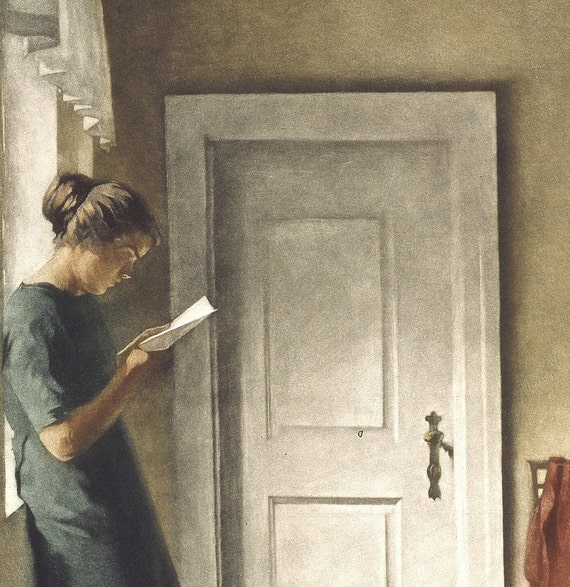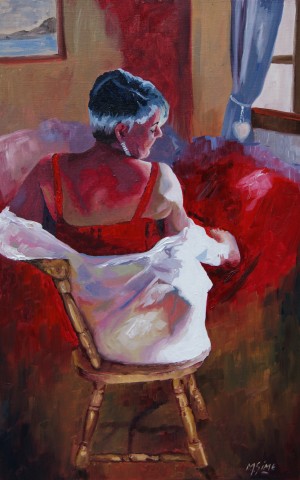The Evolution of Art: A Comprehensive Overview to Figurative Oil Painting
The Evolution of Art: A Comprehensive Overview to Figurative Oil Painting
Blog Article
The Evolution of Metaphorical Oil Paint: Comprehending Its Historical Importance and Modern Interpretations
The evolution of figurative oil paint works as a compelling lens whereby to examine the interaction in between artistic expression and historical context. From the thorough naturalism of the Renaissance to the stirring power of the Baroque, each era has actually added layers of significance and technique to this classic tool. Contemporary artists, attracting from this abundant heritage, are now reinterpreting the human number in manner ins which challenge typical stories. As we explore these changes, one have to consider just how the discussion between present and previous informs not only artistic technique however also social reflections in an increasingly intricate globe.
Origins of Metaphorical Oil Painting
The beginnings of figurative oil painting can be mapped back to the very early Renaissance in Europe, particularly in the 15th century. The advancement of oil paint permitted for greater depth of color and information, boosting the realism and vibrancy of their work.

In this transformative era, figures were frequently portrayed within contextually rich atmospheres, showcasing not only their physical attributes but also their mental states. Leaders such as Jan van Eyck and Titian used the tool's convenience, using layering strategies to attain brightness and appearance. This technology promoted the portrayal of intricate fabrics and the nuances of complexion, adding to the growth of portraiture and narrative scenes.
Moreover, the Renaissance emphasis on humanism promoted a recognition for distinctiveness, which consequently affected musicians to develop even more relatable and vibrant figures - figurative oil painting. Consequently, figurative oil paint emerged as a powerful vehicle for narration and psychological engagement, preparing for future creative activities and styles
Key Historic Motions
Substantial historical movements have formed the advancement of metaphorical oil painting, each contributing one-of-a-kind viewpoints and methods that broadened the tool's possibilities. The Renaissance marked a turning point, emphasizing realistic look and the human kind, with artists like Leonardo da Vinci and Michelangelo pushing the limits of anatomical accuracy and viewpoint. Following this, the Baroque era brought significant contrasts of light and shadow, exemplified by Caravaggio, that infused spiritual themes with intense emotionality.
The 19th century presented Romanticism and Realism, where artists such as Delacroix and Courbet tested classical suitables, concentrating on individual expression and daily life. The arrival of Impressionism even more changed the medium by highlighting the results of light and shade, resulting in a separation from conventional representation.
In the very early 20th century, movements like Expressionism and Cubism redefined figurative paint through abstraction and the exploration of psychological deepness. Each of these motions not just mirrored the societal modifications of their times yet also prepared for modern interpretations. The interaction in between these historical motions has actually created a rich tapestry of approaches and designs, affecting contemporary musicians in their search of recording the human experience on canvas.
Techniques and Materials Development

Throughout the Baroque duration, methods such as chiaroscuro and sfumato emerged, boosting the psychological resonance of metaphorical structures. Musicians started to try out lusters and impasto, controling texture and luminance. By the 19th century, advancements like making use of pre-mixed paints in tubes revolutionized access, enabling artists to repaint en plein air and capture the short lived impacts of light.
The 20th century saw the introduction of artificial pigments and mediums, which increased the palette and modified the consistency of oil paints. Moreover, the expedition of brand-new application techniques, such as scheme blades and brushes of differing stiffness, more diversified imaginative expression. Collectively, these improvements mirror the developing partnership between materials, methods, and the imaginative vision inherent in figurative oil paint.

Contemporary Analyses
Contemporary analyses of metaphorical oil paint mirror a vibrant discussion between tradition and development, where page artists challenge established standards and check out varied styles. This development shows up in numerous methods, as modern musicians mix timeless strategies with modern-day principles, often dealing with social, political, and personal narratives.
Numerous professionals attract motivation from historic jobs, yet they infuse their pieces with contemporary point of views, using the human type as a car for commentary on culture, identity, and gender. Artists progressively explore abstraction, distortion, and blended media, which enables a more comprehensive interpretation of the figure and its context.
Moreover, the usage of vivid color schemes and unconventional make-ups usually offers to interrupt standard seeing experiences, provoking essential involvement from target markets. This shift in emphasis prolongs beyond visual appeals; it reflects an expanding useful source awareness of the intricacies of human experience in an interconnected globe.
As figurative oil painting continues to evolve, it continues to be an essential tool for checking out the nuances of modern life, symbolizing both a regard for heritage and a dedication to modern thought. The outcome is a rich tapestry of expression that resonates with the intricacies of the modern human problem.
Influence On Modern Art
The influence of metaphorical oil paint on modern art is extensive, as it has actually continually influenced a myriad of imaginative movements and methods throughout the 21st and 20th centuries. From Expressionism to Surrealism and past, the exploration of the human figure has actually continued to be a central theme, enabling musicians to share complex emotions and stories. This focus on metaphorical representation has caused a re-examination of typical techniques, leading to ingenious strategies that blend realism with abstraction.
Furthermore, contemporary musicians have actually welcomed figurative oil painting as a way to attend to political and social concerns, utilizing the medium to challenge perceptions of culture, gender, and identity. The resurgence of interest in figurative work in recent years mirrors a longing for link in a significantly electronic globe, where human experience and feeling are extremely important.
In addition, the discussion in between metaphorical oil paint and contemporary art is obvious in the jobs of musicians such as Kehinde Wiley and Jenny Saville, that attract on historical recommendations while instilling their pieces with modern significance. Eventually, figurative oil painting remains to shape and redefine modern creative expression, emphasizing its long-lasting relevance in the art globe.
Verdict
The evolution of metaphorical oil painting underscores its historic relevance and adaptability throughout different artistic movements. From the naturalism of the Renaissance to the stirring expressions of the Baroque and the ingenious methods of modernity, this tool has constantly changed. Contemporary analyses reflect vivid colors and unconventional make-ups, cultivating vital engagement with political and social themes. Inevitably, figurative oil paint remains an essential medium for discovering the human experience, resonating greatly in today's digital landscape.
The evolution of metaphorical oil paint serves as an engaging lens through which my website to take a look at the interplay between creative expression and historical context.Considerable historical activities have shaped the advancement of metaphorical oil painting, each adding distinct ideologies and techniques that broadened the tool's possibilities.As historical motions formed the trajectory of metaphorical oil painting, the products and techniques utilized by musicians have actually likewise undergone considerable makeovers. figurative oil painting.The impact of figurative oil paint on modern-day art is extensive, as it has continuously motivated a myriad of imaginative movements and methods throughout the 21st and 20th centuries.The advancement of metaphorical oil paint underscores its historical importance and versatility across different creative motions
Report this page